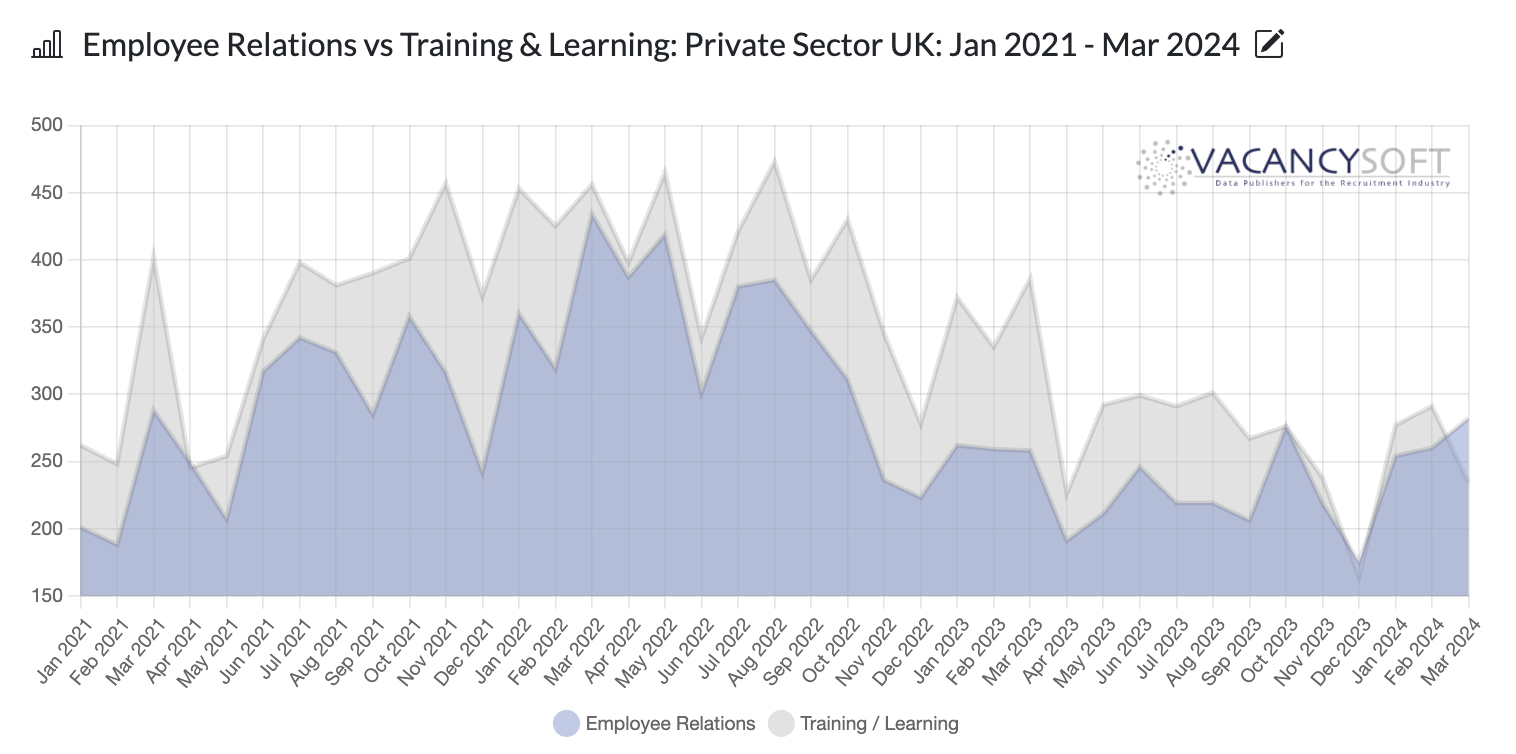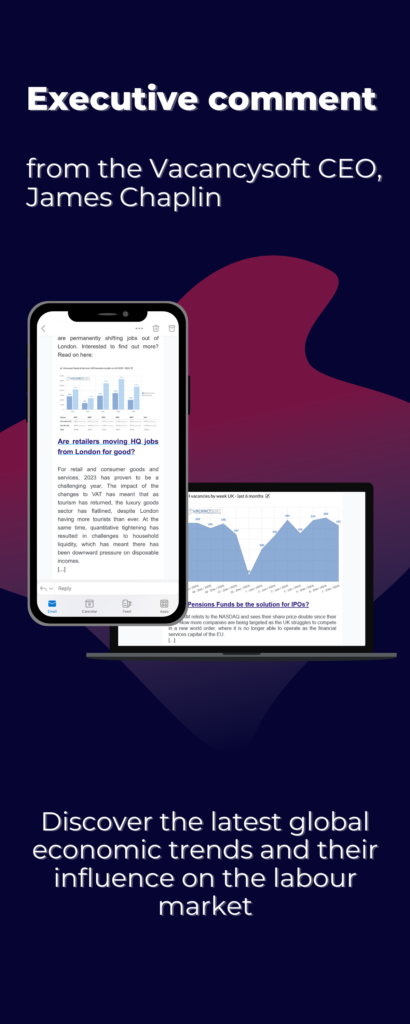Why are Employee Relations specialists suddenly in Demand?
Training / Learning drops below ER for the first time in over 3 years

For the first time in over three years, this March, there were more vacancies for employee relations specialists than training/learning across the private sector in the UK. While this was just one month, the signs are that in April, it is set to repeat, at which point this could indicate corporations are shifting their priorities when it comes to their staff.
Looking at the elements within Employee Relations, this then covers benefits, compensation and rewards, meaning that at a time when the cost of living crisis is on the agenda, and salaries continue to outpace inflation, businesses are being forced to focus on analysing how they compensate their staff, in this war for talent.
According to data from the ONS, annualized salaries are rising at the moment by 6.2%, where when this is compared with consumer price inflation, at 3.2%, this shows the underlying trend. Similarly, the war for talent is real, and the cost of replacement is higher than ever, hence businesses prioritizing here is a recognition of the real cost of not doing so. It is interesting though that training / learning vacancies have dipped. This would suggest that the focus of hiring is moving away from junior staff.
The other interesting point to emerge out of this data set, is that employee relations vacancies in march actually hit the highest level going back to October 2022. In contrast, training / learning vacancies dipped to the lowest level going back to April 2023 (if excluding December.)
Analysed by sector, we see that it is within Financial Services that the surge in employee relations has happened over the last 3 months. Indeed, the industry makes up 28.3% of all employee relations vacancies. In contrast, with Training & Learning, it is Consumer Goods & Services which is the largest industry block recruiting. London is the leading region for both functions, equally employee relations is more centred around the capital.
Looking ahead, the fact that businesses are shifting away from recruiting for training / learning staff will be a concern for policy makers. With much of the discussions of the moment centering around rising economic inactivity amongst 18-24 and the change in generational approach to work, could this therefore mean that corporates are giving up on trying to hire young British workers? In the past week, the boss everyone loves to hate, Michael O’Leary has said that he is unable to hire British workers as they don’t want to work. In the meantime, the number of 18-24 yr olds who are economically inactive (not in or looking for work) increased by 311,000 compared to the previous year, to 3.05 million. This was the highest recorded level since records began in 1992.
What next for UK PLC? Sunak thinks the solution is to strip down sick benefits. Insofar that he is unlikely to be in Government much longer, what does Starmer propose the answer is to get young people back to work?
The data referenced above has been sourced from Vacancy Analytics, a cutting-edge Business Intelligence tool that tracks recruitment industry trends and identifies emerging hotspots. With 17 years of experience, we have a deep understanding of market activities in the UK and globally.
Want to unlock the full potential of Vacancy Analytics to fuel your business growth?
Book a 30-minute workshop with us and discover the power of data in shaping the future of your market!
p.s. By the way, if you are a fantasy football fan, why not join our league this season? With over 50 people already registered, we will be doing prizes for the winner and for the manager of the month if we hit 100+. Get involved!


